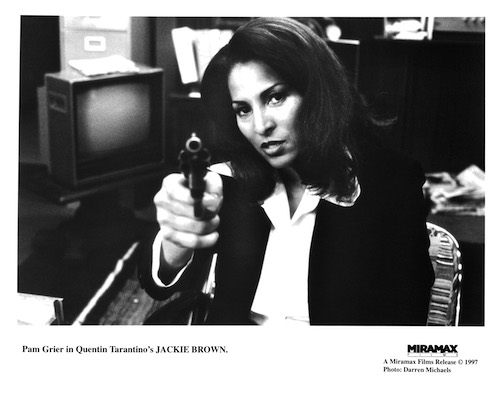
Quentin Tarantino's Jackie Brown has swaggered back onto Cineworld screens in time for its 25th anniversary.
Blaxploitation icon Pam Grier delivers a career-best performance in Tarantino's adaptation of the Elmore Leonard novel, Rum Punch. Jackie Brown is considered by many to be the finest movie from the Pulp Fiction provocateur, anchored as it is by the memorable source material and subsequently rich characterisation.
Here are the scenes you need to experience again on the big screen.
1. 'Across 110th Street'
In Tarantino's classic magpie style, the opening of Jackie Brown is styled as an homage to an earlier classic, in this case, 1967's The Graduate, starring Dustin Hoffman.
However, Tarantino savvily aligns us with star Grier's Blaxploitation back catalogue, keeping her in profile as Bobby Womack's soulful 'Across 110th Street' casts a sense of immediacy and mood.
Even before we know air stewardess Jackie's name, we get a sense of her resolve and inner steel. There's never been any doubt about Tarantino's skill in setting a scene. This has to be one of his very best efforts.
2. "Accept no substitutes"
Once again, Tarantino gives a plum role to his muse, Samuel L. Jackson. In this instance, Jackson plays the threatening arms dealer Ordell, the criminal for whom Jackie is smuggling money. When the latter is busted and used as a pawn to help bring Ordell in, chaos ensues.
Jackson is as commanding and convincing as ever. However, the real surprise in the cast is a low-key Robert De Niro, playing Odell's down-at-heel, hangdog and ever-so-slightly obtuse companion Louis. It's a finely textured turn from De Niro and a late-career highlight before he dipped into low-brow comedy.
3. Cherry and Jackie
Jackie Brown is easily Tarantino's most compassionate and humane film; tellingly, it's his only script based on a pre-existing source, and the maturity of Elmore Leonard's writing goes some way towards explaining the depth of feeling.
The heart of the story resides in the relationship between Jackie and bail bondsman Max Cherry. The latter is played by Robert Forster, plucked, in a classic Tarantino move, from years of obscurity and placed in the spotlight to dazzle with a graceful, moving performance.
The slow-burn chemistry between Grier and Forster is a joy to watch as they navigate both sides of the law, and also their evident feelings for one another.
4. "You shot Melanie?"
It wouldn't be a Tarantino movie with a sudden, splatterific moment of shocking violence. Refreshingly, however, Jackie Brown is generally low on the shock factor, instead favouring character development over sensationalism.
That said, the moment where Ordell regretfully executes his old buddy Louis over a money swap gone bad is enough to make one leap out of their seat. And yet, quite unlike most other Tarantino movies, there's a palpable strain of regret even coursing through this sequence as Ordell laments what Louis has become.
5. "I'll send you a postcard"
A sensitive Quentin Tarantino movie about unrequited love? There's a very good reason why many critics and fans hold Jackie Brown in the highest of esteem.
Puncturing through the usual self-referential Tarantino alloy, Jackie Brown extracts a story about palpable, wounded, sensitive human beings. It all comes to a head during the bittersweet farewell between Jackie and Cherry where what's unspoken is the key.
Robert Forster landed an Oscar nomination for his role in the movie and Pam Grier a Golden Globe nomination. Looking back at the movie all these years later, it's easy to see why. The two communicate burning heat and desire seemingly without even trying.
Are you ready to take a walk on the wild side? Then click here to book your tickets for Jackie Brown, on release now at Cineworld.

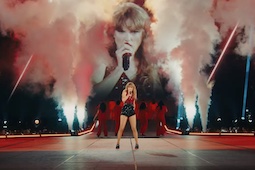
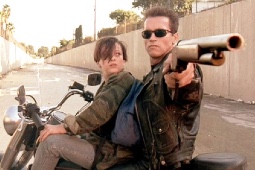
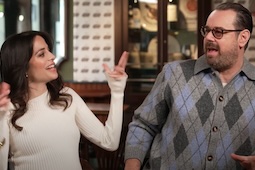
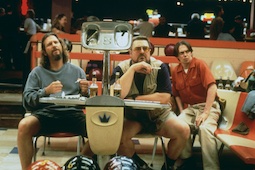

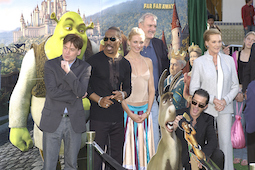
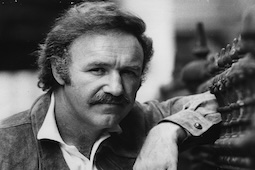
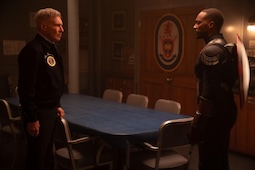
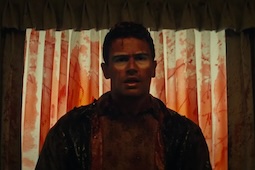


.jpg)
.png)






